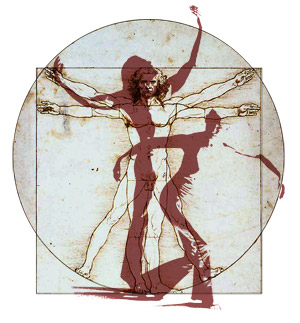Our Bodies Amplify Cognitive Impact of Metaphors
Sunday, January 2nd, 2011 The last 30 years of research in the brain, cognitive and behavioral sciences have revealed 10 core traits about how minds work that are especially relevant for designers. Taken together, we can say these 10 traits make up a new view of how minds really work. For example, two of the traits reveal that our minds are:
The last 30 years of research in the brain, cognitive and behavioral sciences have revealed 10 core traits about how minds work that are especially relevant for designers. Taken together, we can say these 10 traits make up a new view of how minds really work. For example, two of the traits reveal that our minds are:
Embodied or grounded in sensory information and pattern recognition not abstract thought. We literally use our physical bodies to think, learn and do all things mental.
Metaphor Obsessed or constantly associating one concept with another as a primary means for remembering, making sense of the world, learning and creative expression.
The importance and subtle nature of these two traits are illustrated nicely in a new Scientific American article, Body of Thought: How Trivial Sensations Can Influence Reasoning, Social Judgments and Perception.
“But a rapidly growing body of research indicates that metaphors joining body and mind reflect a central fact about the way we think: the mind uses the body to make sense of abstract concepts. Thus, seemingly trivial sensations and actions-mimicking a smile or a frown, holding smooth or rough objects, nodding or giving a thumbs-up-can influence high-level psychological processes such as social judgment, language comprehension, visual perception and even reasoning about insubstantial notions such as time. ”
The interplay between metaphors and embodiment can be especially fruitful for cognitive designers. The article highlights research that looks at the impact of bodily metaphors (e.g. gestures that trigger metaphorical associations) and seemingly minor sensations (e.g. temperature, hardness, smoothness, smells etc.) on emotional processing, reasoning about past/future and moral cognition. For example, striking the so-called power pose can actually influence people to make bolder decisions.